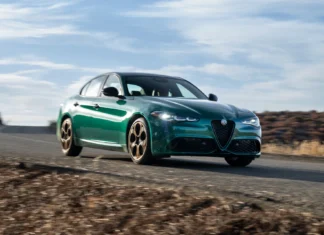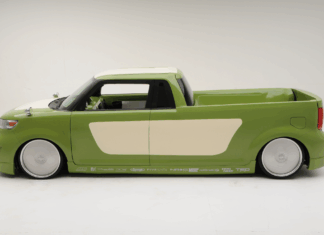
Mattel invited us out to see how Hot Wheels are actually conceptualized, designed and built.
Recently, toy manufacturer Mattel invited TFL Studios to El Segundo, California to go behind the scenes and see what it takes to build a Hot Wheels car. This was quite the honor as very few people get to look behind the curtain, witnessing the magic. Honestly, as someone who owned many of these tiny vehicles as a kid in the 1970s, it was a dream come true, and I wasn’t disappointed.
This was a tour, with Q&A along the way, with many zones restricted to cameras and recording devices. Just getting in required a pre-screened agreement, secure pass, door check-in and a full tutorial about what is permitted, before the tour actually began. As such, I can’t reveal everything here or in the video below.
From concept to production in about 18 months
Similar to designing an automobile for public consumption, building Hot Wheels toys is an involved process. There are a variety of ways the project begins. The three ways we mainly discussed were artist’s concepts, shrinking an existing vehicle, or collaborations. If you’ve ever seen unusual Hot Wheels, like a taco-car “Car-de-Asada” – that was an artist’s concept brought to production.

Other products, like a production vehicle are fairly straightforward, but there are still many hurdles to overcome in terms of livery, colors, trims, and other specifications. There’s a whole committee that gives the go-no-go for each step on all these toys. This is a world-wide effort as many steps are farmed out to overseas’ partners during production.
There’s also collaborations: with a few different options therein. In some cases, someone will build a sweet one-off custom car. Just like what you see at SEMA and other car shows. If they win a contest, or gain Mattel’s notice, they can go into production as a Hot Wheels’ product. In addition, automakers and designers collaborate with the designers to build cars that ask, “what if?”
From sketches to 3D-printed models and even packaging?
Once the initial “okay” is given, sketches eventually lead to 3D printed models. These steps firm up what is needed part-by-part for the production stage. Once again, there are a lot of folks on the ground level who have to give their stamp of approval along the way. During this time of trial and error, alterations or production changes are addressed as the final vehicle is approved.
During this process, and after the aforementioned paint-scheme is approved, the artist on the packaging side get to work. It may seem trivial to some, but those Hot Wheels’ packages require a lot of work. As it was explained to us, these packages are very important as its the first thing the consumer will notice. Its more than a simple image of the small vehicle in the wrapper, it’s a part of setting the mood and theme of the toy.
After all that is done, and production is about to begin – there’s marketing, logistics and sales. Considering this is a process that’s been refined since 1968, they seem to know what they’re doing. Now, to bring in even more people to the fold, Mattel has the Hot Wheels Legend’s Tour. This is a worldwide car show, where you can enter to have your unique ride turned into a Hot Wheels production toy!
There is a lot to unpack, but I feel like I know this business a little bit better, and I dig how they make these toys. Check out the video and tell us what you think!

























